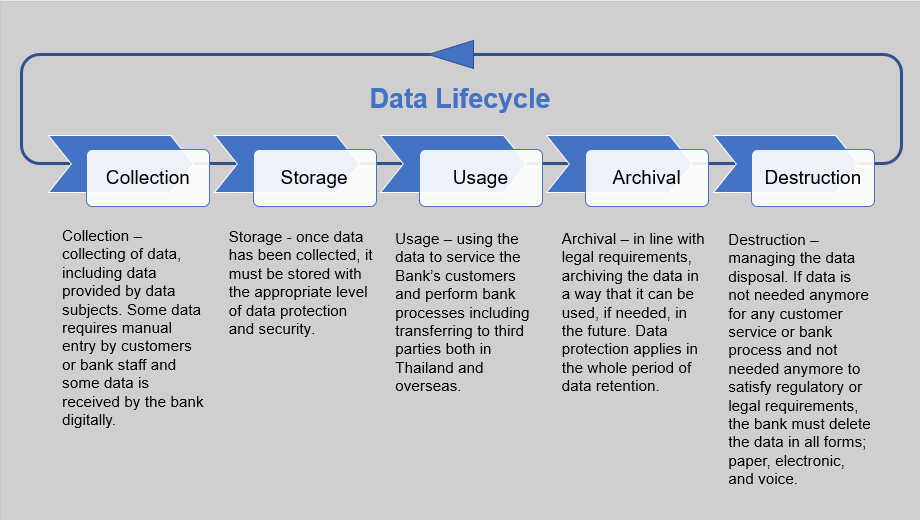Data Destruction Solutions: A Crucial Element in Your Cyber Security Method
Data Destruction Solutions: A Crucial Element in Your Cyber Security Method
Blog Article
The Vital Nature of Data Devastation in Upholding Computer System Protection Solutions and Protecting Versus Unauthorized Access
In a period where information breaches and identification theft are progressively prevalent, the significance of effective data damage can not be overstated. Organizations must acknowledge that the failure to correctly get rid of sensitive info poses not only legal and economic risks but likewise a potential disintegration of client trust. Different methods, from data wiping to physical destruction, function as essential safeguards versus unauthorized access. Recognizing the effects of information devastation techniques and conformity with regulations elevates vital concerns about the adequacy of current methods and their lasting viability in the face of evolving dangers.
Relevance of Information Devastation
In a significantly digital world, the importance of information devastation can not be overstated. As companies generate huge quantities of sensitive info, the prospective effects of falling short to effectively dispose and manage of that information end up being progressively severe. Data violations, identification burglary, and corporate espionage pose significant risks, underscoring the necessity of efficient data devastation methods.

Furthermore, as technology evolves, so too do the techniques through which harmful actors seek to exploit delicate info. Organizations must continue to be positive and attentive in their data destruction strategies to safeguard against these evolving threats. By prioritizing information destruction, business not only shield their properties yet additionally foster trust fund amongst clients and stakeholders, showing a dedication to accountable data management and safety and security methods.
Approaches of Effective Data Damage
To guarantee the irreversible and complete destruction of sensitive data, companies can employ a selection of efficient techniques tailored to their specific needs. Among the most typical approaches is information cleaning, which includes utilizing specialized software application to overwrite existing data numerous times, making recovery practically impossible. This is particularly useful for solid-state drives and difficult drives, where standard deletion methods are poor.
One more efficient technique is degaussing, which uses solid magnetic areas to interrupt the magnetic domain names on storage media, providing the information irretrievable. This approach is specifically matched for magnetic storage tools, such as tape drives and hard disks.
Physical devastation is additionally a feasible alternative, entailing the shredding, crushing, or incineration of storage space gadgets. This method assurances that information can not be recovered, making it ideal for companies managing extremely sensitive information.

Compliance With Data Security Rules
Organizations have to not only concentrate on effective information devastation methods yet additionally ensure compliance with information security guidelines that regulate exactly how sensitive info is taken care of and dealt with. Sticking to these laws is vital for maintaining and securing individual data customer depend on. Rules such as the General Information Security Regulation (GDPR) in the European Union and the Medical Insurance Mobility and Responsibility Act (HIPAA) in the United States impose stringent guidelines on information monitoring, which consist of demands for the secure disposal of delicate info.
To achieve compliance, organizations have to carry out comprehensive data devastation plans that straighten with these legal structures. This includes identifying data that calls for destruction, developing methods for protected methodsâEUR" such as shredding physical media or using software that satisfies market criteria for data wipingâEUR" and preserving detailed records of damage activities. Regular audits needs to be carried out to guarantee adherence to these plans and to recognize any possible locations for enhancement.
Failing to adhere to information security policies can bring about considerable lawful ramifications, including significant penalties and damages to a company's track record. Incorporating conformity into information damage techniques is not just a legal responsibility but likewise a vital element this website of a robust info protection method.
Effects of Poor Information Handling
Poor information handling can cause extreme repercussions that expand beyond instant operational troubles. Organizations may deal with substantial financial losses as a result of data breaches, which commonly cause expensive removal initiatives, lawful fees, and regulatory fines. These financial implications can impede and stress sources development, ultimately affecting a company's profits.
Additionally, poor data handling can significantly harm a company's reputation. Clients, stakeholders, and partners might lose rely on an entity that stops working to secure sensitive details, resulting in lowered client loyalty and possible loss of service chances. This disintegration of trust fund can take years to restore, if it can be recovered in any way.
Furthermore, companies might face lawful implications occurring from non-compliance with information defense guidelines. Such infractions might lead to charges and investigations, worsening the monetary concern and more tainting the company's photo.
In the realm of cybersecurity, insufficient information management techniques can create susceptabilities that make systems much more vulnerable to unauthorized accessibility and cyberattacks. Inevitably, these repercussions highlight the critical significance of applying durable information dealing with procedures to safeguard delicate info and preserve organizational integrity.
Best Practices for Secure Data Disposal


First of all, information need to be classified according to its level of sensitivity. Delicate details needs more strenuous disposal approaches, such as shredding physical files and making use of advanced software program for electronic information cleaning. Using qualified information destruction services makes certain compliance with market guidelines and standards.
Secondly, organizations must execute a data disposal plan that mandates routine audits. This plan should outline the procedures for information retention and destruction, making sure that out-of-date data is thrown away promptly and firmly. Educating staff members on these protocols is necessary to fostering a society of safety and security understanding.
Lastly, preserving comprehensive records of disposed data enhances accountability and gives anchor a clear audit trail. This paperwork ought to consist of the sort of information damaged, the approach utilized, and the day of disposal.
Final Thought
Embracing durable methods such as information my sources wiping, degaussing, and physical devastation, along with conformity with regulations like GDPR and HIPAA, is important for protecting sensitive info. Overlooking appropriate information disposal methods can lead to severe effects, including information breaches and lawful consequences.
In an era where information breaches and identification theft are increasingly prevalent, the value of reliable data destruction can not be overstated. data destruction. Information violations, identity burglary, and company espionage posture significant hazards, underscoring the requirement of effective information devastation practices
Conformity with laws such as GDPR and HIPAA requireds that organizations implement rigorous information security steps, including the safe and secure devastation of data at the end of its lifecycle.
By prioritizing data devastation, companies not only secure their assets however likewise foster count on amongst stakeholders and customers, demonstrating a dedication to responsible data management and safety techniques.
Organizations must not just focus on effective data damage techniques but also guarantee compliance with information security laws that govern exactly how sensitive info is dealt with and disposed of.
Report this page